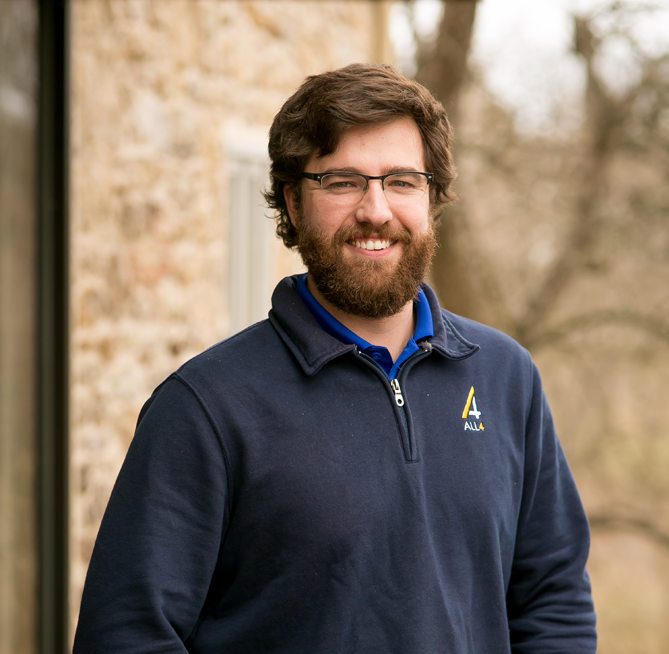Appendix W Revision: The New Era of Air Quality Modeling – Long Range Transportation Modeling Updates
Posted: March 3rd, 2017
Authors: Dustin S.
Long Range Transportation, we aren’t talking about the Griswold’s driving cross-country to Walley World and those family car trips to far away one-off destinations (like the World’s Largest Ball of Twine). We’re talking about the atmospheric transport and dispersion of pollutants through the air for distances greater than 50 kilometers (km) from an emissions source!
Long Range Transportation (LRT) is part of the Interagency Workgroup on Air Quality Modeling (IWAQM) Appendix W and this blog is part of the series of blogs about the Appendix W/IWAQM revision introduced in January 2017.
LRT is a New Source Review (NSR) air permitting requirement. The revisions incorporated into Appendix W affect when LRT modeling analyses are required and how they are completed. These revisions mean that LRT modeling may need to be done slightly different than if a facility has completed it in the past. The changes to LRT could impact the amount of time, money and resources required for modeling purposes. For an extended look into what updates have been made and how they may impact a current or future project, please read on!
What updates have been made for LRT under the Appendix W revision?
In short, two things (we’ll call them Things 1 and 2) which include the removal of a U.S. EPA preferred model and the implementation of a screening approach for demonstrating compliance with the National Ambient Air Quality Standards (NAAQS) and Prevention of Significant Deterioration (PSD) increments. A technical support document for American Meteorological Society/Environmental Protection Agency Regulatory Model (AERMOD)-Based Assessments of Long-Range Transport Impacts for Primary Pollutants was released as part of the Final Rule preamble in December of 2016. The guidance document outlines the two major updates in the Appendix W revision as it relates to LRT Modeling:
Thing 1: California Puff Model (CALPUFF) has been removed as the U.S. EPA-preferred model for LRT applications.
U.S. EPA did not determine a preferred replacement model for LRT applications. However, the need for LRT assessments for NAAQS and PSD increment violations for inert pollutants [i.e. Sulfur Dioxide (SO2), Particulate Matter (PM), etc.] has been limited due to a new screening approach for addressing the NAAQS and PSD increments (see Thing 2). In cases where LRT assessments are required, the initial thought two years ago was that CALPUFF would be gone completely. This is not the case. CALPUFF is still an accepted way to model, however, it requires approval before use, unlike AERMOD, which does not require approval before use. It is important to note that the use of CALPUFF in the near-field (for distances less than 50 km from a facility) as an alternative model for situations involving complex terrain and complex winds is not changed by removal of CALPUFF as a preferred model in Appendix A.
Thing 2: A screening approach has been implemented for addressing the NAAQS and PSD increment.
The traditional approach for demonstrating compliance with a NAAQS and PSD increment standard is a two-stage approach. Under the two stage approach permitting authorities have issued PSD permits based on a demonstration that the air quality impacts of a proposed source are below concentration levels considered to be significant with respect to the NAAQS or PSD increment. The first step of this approach involves an air quality modeling analysis that produces results which are compared to significant impact levels (SILs) to determine the culpability of a new or modified source. In conjunction with the recent Appendix W updates, a new screening approach intends to eliminate the need for many LRT model applications by analyzing the short-term, near-field results. The way the screening approach works is that if NAAQS compliance with short-term standards can be demonstrated in near-field application, no LRT evaluation would be necessary because compliance with short-term standards indicates that there are not likely to be significant source impacts at or past 50 km. An example of a facility that could be a good candidate to avoid the time and money sink of an LRT evaluation would be facilities with shorter stacks which have maximum impacts in close proximity to the source and where the impacts at 50 km are much lower. Determining whether LRT is applicable for a project gets a little trickier when the stacks are tall (greater than 100 meters) or when terrain surrounding a facility is elevated because the maximum impacts of a plume of emissions occur much farther downwind since the plumes require more distance to contact the surface (example elevated terrain scenario below).
You may be impacted by this update if your facility is required to perform air quality modeling to demonstrate compliance with PSD increment and your facility is located within 300 km of a Class I area. ALL4 is here to assist you and provide you the knowledge and expertise that is required for modeling projects such as determining if LRT is required for your facility!
What do you need to do? Could you use some assistance?
If your facility requires NAAQS or PSD increment compliance demonstrations for any project, you will need to be aware of how emissions from your facility will affect downwind locations both in the near-field and LRT regions. There are many complexities that go on with modeling emissions from your facility and ALL4 is here to help. We can help you determine if LRT is required for your project and we have the resources to fulfill any of your modeling requirements. If you have any questions regarding LRT Modeling Updates or Appendix W in general, give me a call (610.933.5246 x126) or reach out to Dan Dix (ddix@all4inc.com, 610.933.5246 x118). Other members of ALL4’s air quality modeling team are also available if you have any questions or want to learn more. And lest we forget to mention it, stay tuned for more blogs about the Appendix W Final Rule updates, and how they could impact your projects!

